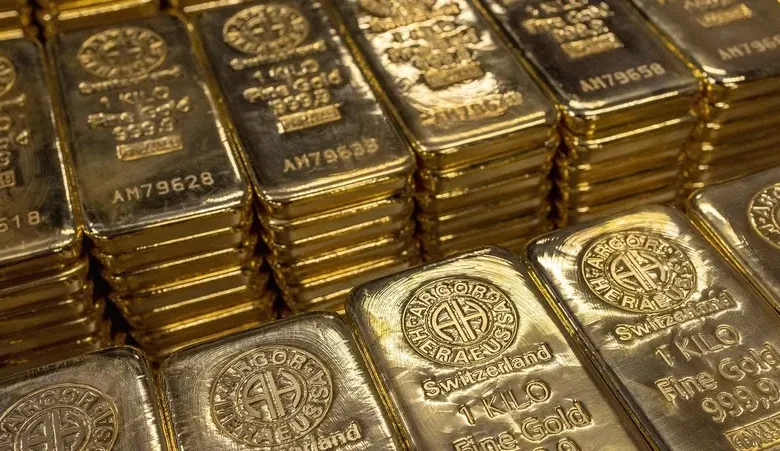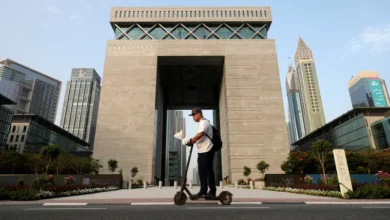Gold prices: A barometer of geopolitical instability and economic fears

Gold prices slipped slightly on Monday, following up on last week’s declines. These drops have sparked a debate among investors and analysts about whether the losses are part of a corrective wave following record highs or simply routine profit-taking that could reflect deeper economic and political dynamics.
This decrease comes as hopes for early interest rate cuts by the US Federal Reserve dampen following last week’s economic data. US monthly inflation rose moderately in March, but stubbornly higher costs for housing and utilities suggested the Federal Reserve could keep interest rates elevated for a while.
As per data analyzed by Al Arabiya English, the CME’s FedWatch tool shows that Investors are currently pricing in a single rate cut this year and see it coming in November.
Last week’s decline in gold prices is the first in 6 weeks.
Despite the recent dip, gold prices have surged by over 13 percent since the beginning of the year. This increase is bolstered by several factors, including its status as a safe haven amid geopolitical tensions in regions like the Middle East and the ongoing war in Ukraine. These tensions were heightened by the first direct confrontation between Israel and Iran that happened this month and Hungary’s warning that the conflict with Russia could escalate into a third World War.
Central bank purchases also significantly contribute to the upward trajectory of gold prices. Many influential countries are moving away from the US dollar as a global reserve currency due to concerns about its use as an economic weapon. According to the World Gold Council, the Chinese central bank has been net purchasing gold for 17 consecutive months, with total central bank gold acquisitions in 2023 reaching approximately 1,037 tons.
Gold demand in China
In 2023, China bought around 225 tons of gold, followed by countries like Poland, Singapore, Libya, the Czech Republic, India, Iraq, Qatar, and the Philippines. Joe Cavatoni from the World Gold Council believes that central banks are expected to remain natural buyers of gold.
The rise in gold prices may also be driven by consumer demand in China, as individuals seek a secure investment amid falling yields on other assets and the devaluation of the yuan, coupled with a housing crisis that has led to the bankruptcy of several real estate giants.
Additionally, fears of a global recession are intensifying, supporting higher gold prices. Currently, data shows an 85 percent likelihood of a recession happening in America in 2024, the highest probability since the Great Financial Crisis in 2008.
These factors have prompted CitiGroup to raise its gold price forecast to $3,000 per ounce over the next 12 to 18 months. Akash Doshi from Citi Bank suggests that prices could climb further if central banks increase their gold purchases significantly, or in the event of a stagflationary recession or a deep global economic downturn.
Buying opportunity
Dr. Ryan Lemond, co-founder and CEO of NeoVision Wealth Management, has been encouraging investors to buy gold since the start of 2023 due to its association with rising global sovereign debt levels.
Lemond, in a previous interview, noted that sovereign debt has reached very high levels, prompting central banks to escalate their gold purchases to record levels in 2022 and 2023, to support their local currencies and bolster economic confidence.
Lemond also mentioned that decreases in gold prices represent a buying opportunity.
However, some analysts believe that the correction in gold prices will continue, arguing that prices have reached their peak and may not return to such levels soon, especially as the strength of the dollar makes gold purchasing expensive. This scenario causes central banks in emerging economies like Turkey and India to hesitate to continue their purchases.
The fluctuations in gold prices reflect more than just direct factors; they encapsulate expectations for inflation, global economic growth, interest rate trends, and monetary policy directions. The ongoing geopolitical tensions are expected to remain a fundamental driver for the continued rise in gold prices, even if the dollar remains strong and the cost of purchasing is high.










